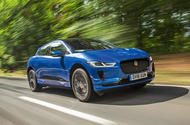The premium EV market is set to be transformed from almost empty to chock full by 2021. Here are the main protagonists today – and a preview of what they might be in a couple of years’ time
It’s a mark of the maturity of electric car technology that there is now a small but fast-growing market for premium-branded EVs.
Some have a luxury angle, others a performance bias; some are big, others not-so-big; and while some come from established automotive industry powers, others are from more ‘disruptive’ outfits. But whatever you’re looking for, if you’re looking for the longest-legged and least compromised electric cars in the world, this chart is where you’ll find them.
This is where Teslas do battle with Mercedes’ EQs, BMW i cars, Audi etrons and even new-groove Porsches. Many of the cars we’ve listed aren’t quite on the market yet but are expected very soon – and where that’s the case, we won’t rank them until we’ve driven them. Whether here or not quite here, however, they are all reasons for the early adopting EV crowd to get very excited.
Best Premium Electric Cars 2019
1. Jaguar i-Pace
The first luxury electric car from a mainstream manufacturer to directly challenge Tesla at the high end, the I-Pace delivers on its brief with stand-out handling dynamics, first-rate interior quality and a striking design that’s slightly more SUV than saloon. It sets the standard for EV ride and handling, delivers strong performance from its twin 197bhp motors, and feels like what a premium-branded electric car should: an unshackled clean-sheet design.
The rarity of 100kW public chargers around the UK road network dents its potential as a long-range tourer somewhat, although that will improve quickly over time as infrastructure grows. As things stand, the car will run for between 200- and 275-miles on a full charge, depending on your cruising speed and driving style.
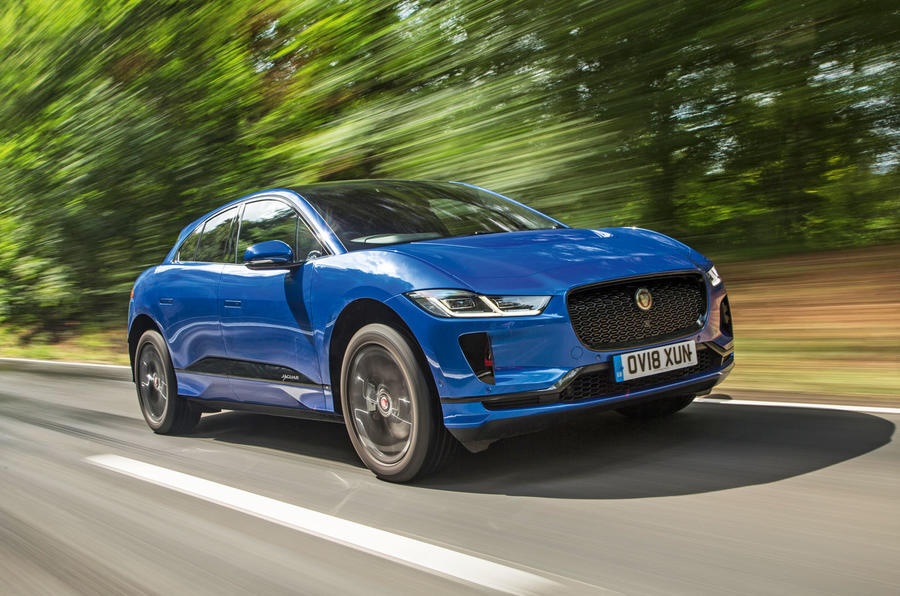
2. Audi E-tron Quattro
Audi has distilled the various qualities for which its revered brand is known and given all of them a new futureproofed home in its first series-production electric car: the E-tron Quattro SUV.
Sized to fit in between the firm’s existing Q5 and Q7 models but offering interior space to rival the latter, the E-tron is powered by a separate electric motor per axle and develops 402bhp and 487lb ft of torque in ‘boost’ driving mode. A Jaguar i-Pace is smaller, lighter, torquier and faster – but interestingly the E-tron beats its close British rival on overall battery capacity, offering 95kWh of storage which is good for a claimed ‘WLTP Combined’ range of 249 miles.
Our first taste of the E-tron came in late 2018, on roads out in the Middle East, where the car impressed most with its classy and refined cabin ambience, its quiet cruising abilities and its Audi-brand-typical apparent build quality. The driving experience was impressive too, not least for its responsiveness and muscular feel up to motorway speeds, while precise and well-balanced handling completed the picture.
When the opportunity to compared the E-tron, on a back-to-back basis, with its rivals from Jaguar, Mercedes and Tesla, we’ll take it: and this order may well change to reflect the result. As things stand, however, our first impression would lead us to expect the car to finish a very close second to the i-Pace for interested drivers.
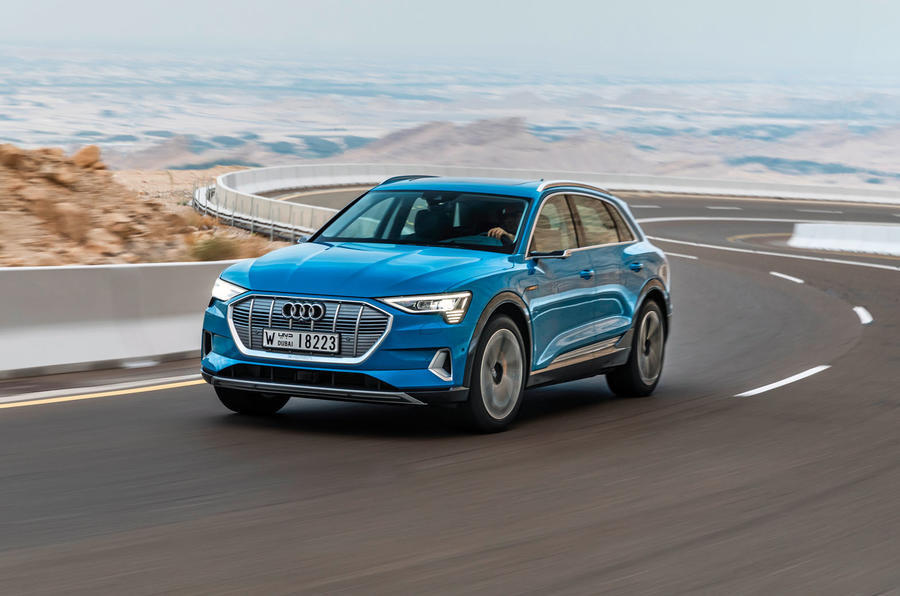
3. Tesla Model S
The car that persuaded the world that an electric saloon could be a viable alternative to a combustion-engined one, and that made the EV break into the luxury-car big time, would still be our pick of Tesla’s model catalogue for its combination of performance, usability, price and range.
In its most potent form, the Model S can accelerate with the ferocity of a super-saloon, and handles tidily enough – although without the tactile involvement you might expect of such a fast car. Overall the Model S certainly makes a better luxury car than a driver’s car.
All models have a futuristic-feeling cabin topped off by a mammoth touchscreen infotainment system. Meanwhile, Tesla’s supercharger network enables easier and more convenient long-range driving than many would imagine possible in an electric car, and practicality is exceptionally good thanks to good-sized boots at both ends of the car and an extra rearward-facing pair of jump seats available in the boot.
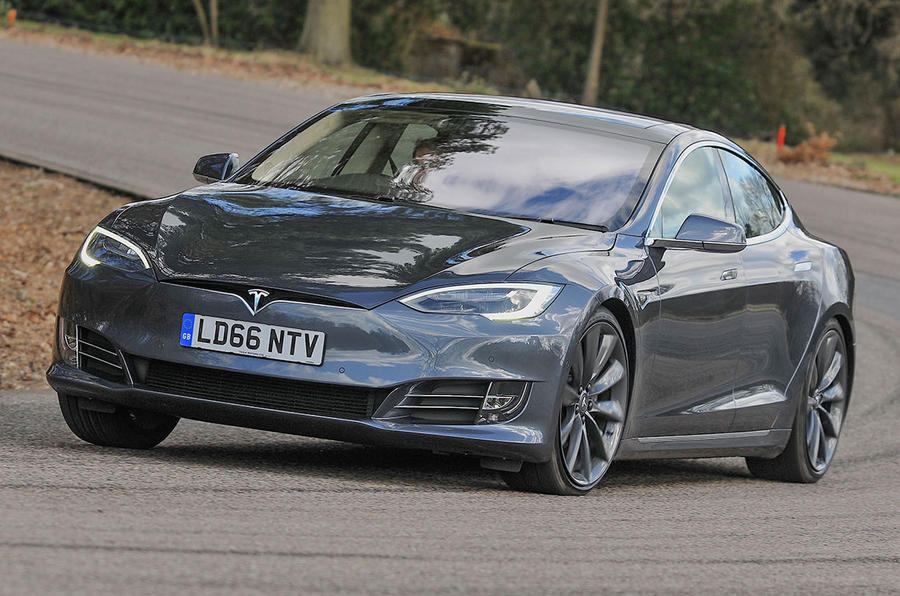
4. Tesla Model 3
So far, we’ve had opportunities to test Tesla’s new smaller saloon, the Model 3, both in North America and Europe – but only in its more expensive, twin-motor guises. Its maker introduced the much-anticipated ‘standard range’ version of the car, available in the USA for less than $40,000, early in 2019, and this may be the car to really broaden Tesla’s reach and boost its market presence – but it’s not expected in right-hand drive form until 2020.
The Model 3 Performance will be available to UK buyers this year, but at a price that’s likely to be close to £60,000, it won’t be the affordability revelation some are waiting for. It’s certainly fast. With two electric motors combining to the tune of 444bhp and a 0-62mph dash of just 3.4sec, it responds to throttle inputs in a way that really challenges your fine motor control as well as your neck muscles. Electric range should be better in other 75kWh versions of the Model 3, however – the Performance version delivering a real-world range much closer to 200miles than 300- in our testing experience.
The car’s cabin is certainly of higher perceived quality than in Tesla’s earlier models, but the back row’s a slightly tight squeeze for adult passengers, and the boot isn’t as roomy or as accessible as is a Model S’.
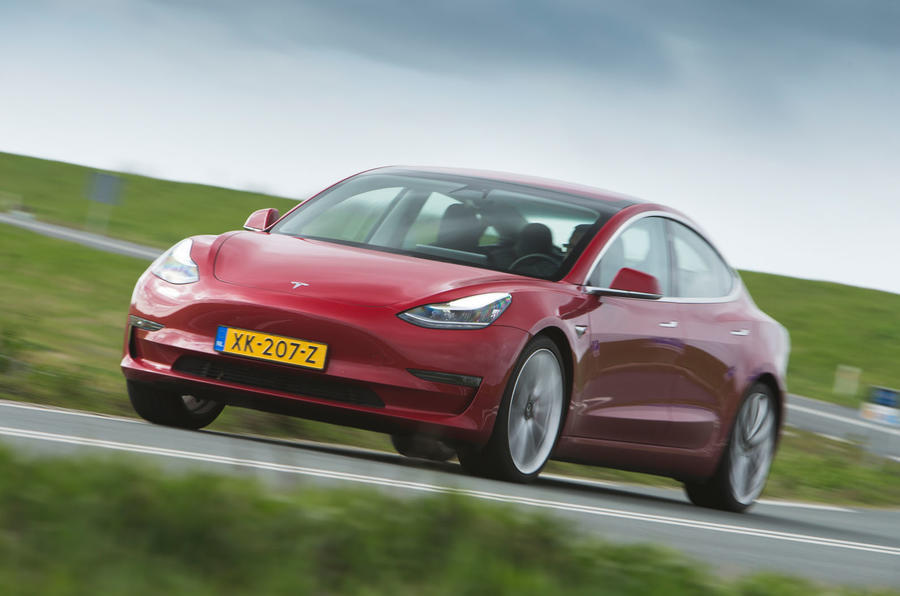
5. Tesla Model X
The sheer size and bulk of Tesla’s biggest model, the seven-seat Model X SUV, is what penalises it relative to its rangemates.
It’s currently in a league of one as far as all-electric seven-seat SUVs are concerned, and so it seems a bit churlish to criticise it in some ways. Nonetheless, if you’re expecting Model S range and performance in a bigger, more versatile package, you’re headed for disappointment. Our testing suggests even range-topping 100kWh versions of the car won’t got much further than 200 miles at typical UK motorway speeds, with the cheaper ones struggling to pass 150- unless you’re conservative with your cruising speed.
Still, if that kind of range suits your purposes, you’ll find an awful lot to like here. With upper-level versions packing more than 600-horspower, the Model X is well capable of beating 4.0sec to 60mph and can feel fast in a way you wouldn’t believe possible of such a large and heavy car. Handling is dulled somewhat by the car’s mass, but still more than credible enough to make the car feel coherent at pace.
Meanwhile, until you’ve seen a pair of all-electric gullwing doors opening automatically in a multi-storey car park and cleverly avoiding any nearby cars or masonry while doing it, you won’t fully appreciate the Model X’s party trick.
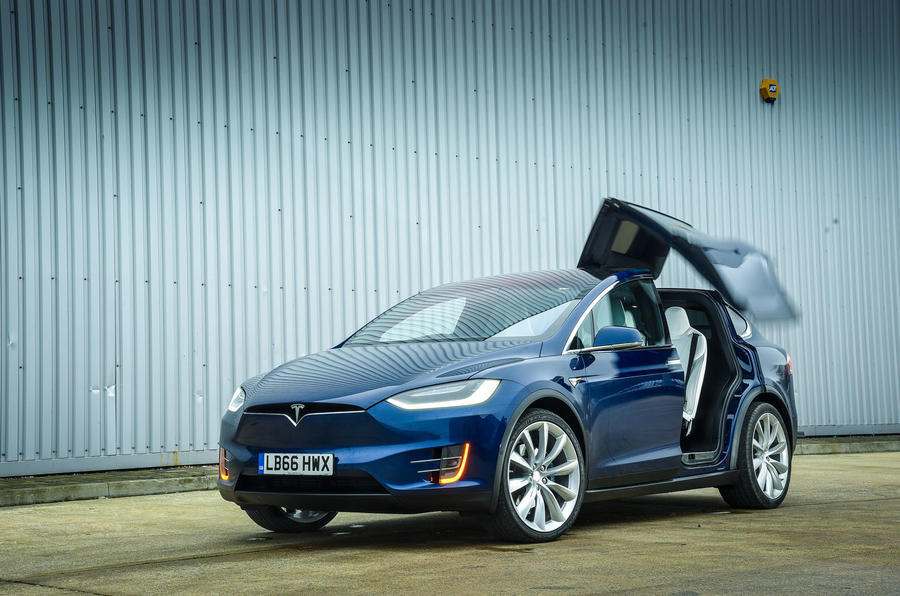
COMING SOON
Mercedes EQC
The EQC will bring Mercedes into the battery-electric market when it launches in the UK later in 2019. Although slightly shorter than the Audi E-tron, the EQC will offer a very similar mid-sized SUV prospect to the Audi’s, with five seats, just over 400 horsepower, an 80kWh battery and a claimed WLTP Combined electric range of 249 miles. It will be the first of four EQ-branded electric Mercedes passenger cars due by 2022.
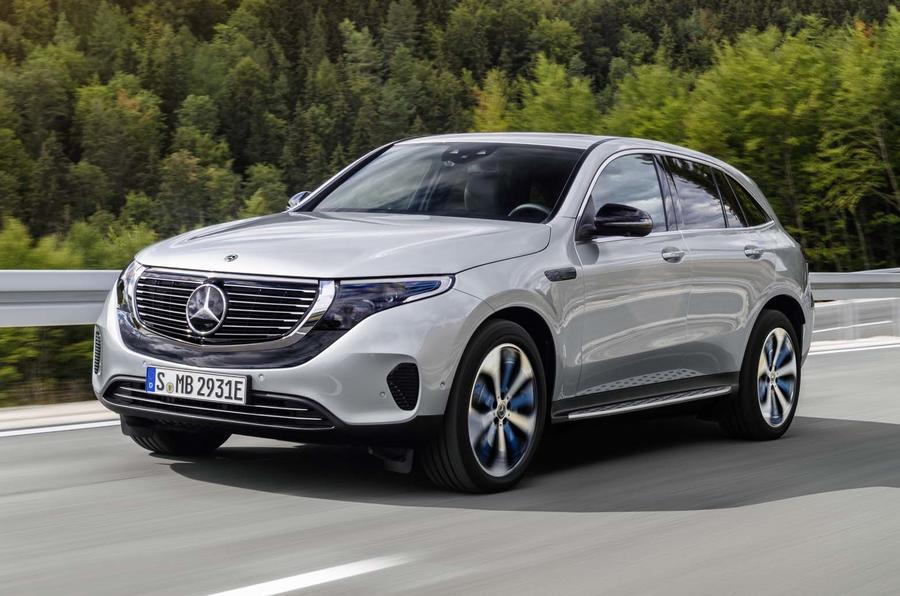
Porsche Taycan
When a company like Porsche enters the electric car fray, you know it’ll be with an EV of real driver appeal. That’s the prospect represented by the Taycan saloon, which is now in the final stages of engineering sign-off before a motor show debut at Frankfurt in September 2019, and a UK sales debut at the very end of this year.
Insiders have hinted that the Taycan will be ultimately be available in circa-450-, 530- and 630-horsepower guises, with most offering between 250- and 300 miles of usable battery range.
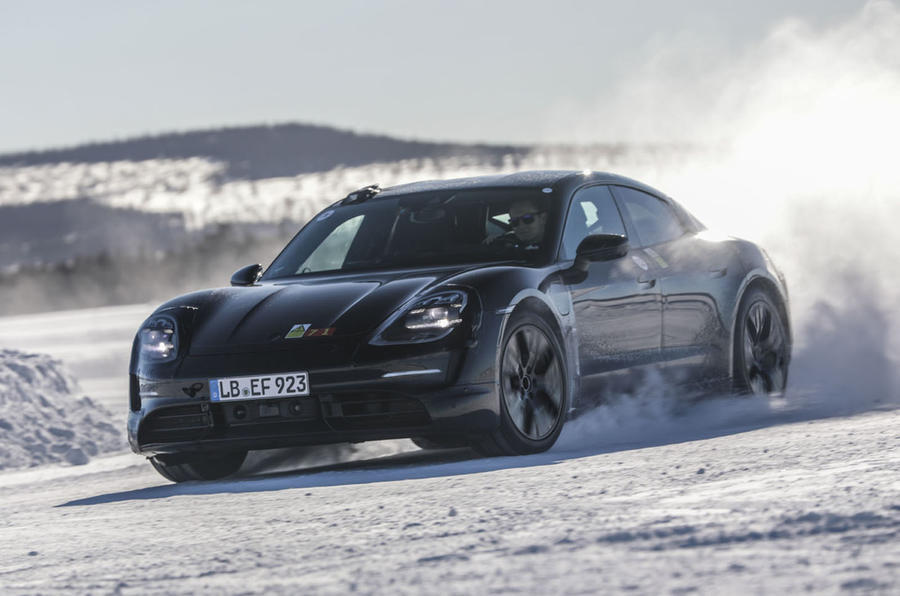
Tesla Model Y
Tesla boss Elon Musk claims the recently announced Model Y crossover SUV has even greater sales potential than the Model 3 saloon, and should be twice as popular when it launches in North America in 2020. It will share the Model 3’s platform and much of its component set, but will be the first Tesla built at the company’s Gigafactory 1 site in Nevada, USA. A European delivery schedule has yes to be announced.
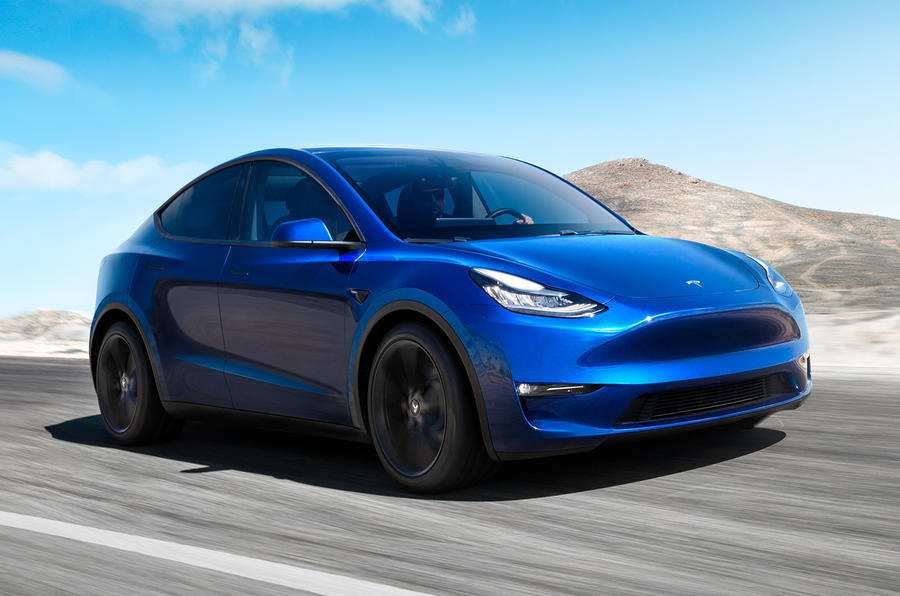
BMW iX3
This will be an electrified version of BMW’s X3 SUV, and so a direct rival for the Audi E-tron, Mercedes EQC and Jaguar i-Pace, due in the UK market in 2020. It’s set to share a platform with the current X3, and to have “more than 70kWh” of onboard battery capacity according to BMW.
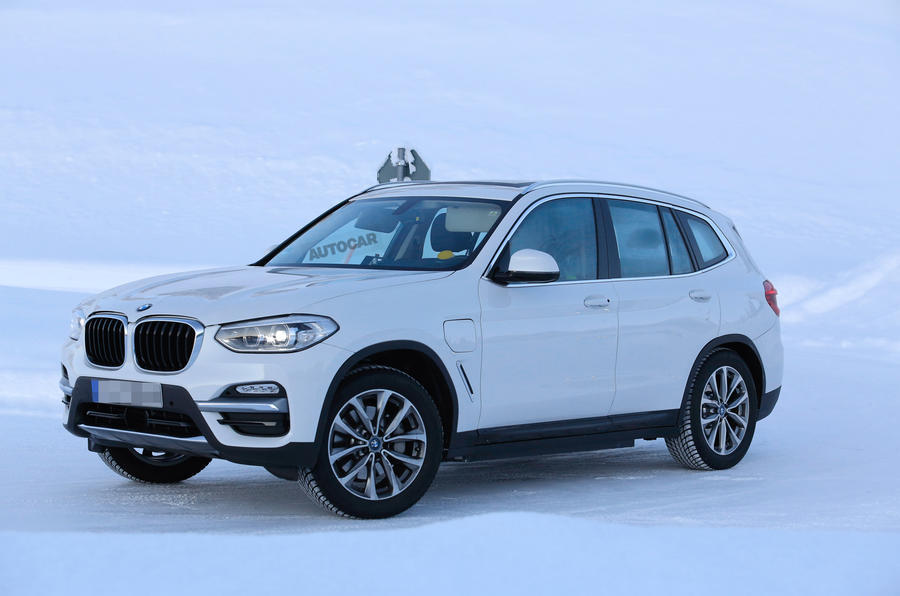
BMW i4
The BMW i4 will follow the iX3 to market in 2021. Set to be Munich’s answer to the Tesla Model 3, it’s already in late-stage development and is claimed to be good for close to 400 miles of range and 0-62mph in 4.0sec flat. It will share a factory, a platform and a design resemblance with BMW’s forthcoming 4-Series Gran Coupe.

Source: Autocar
